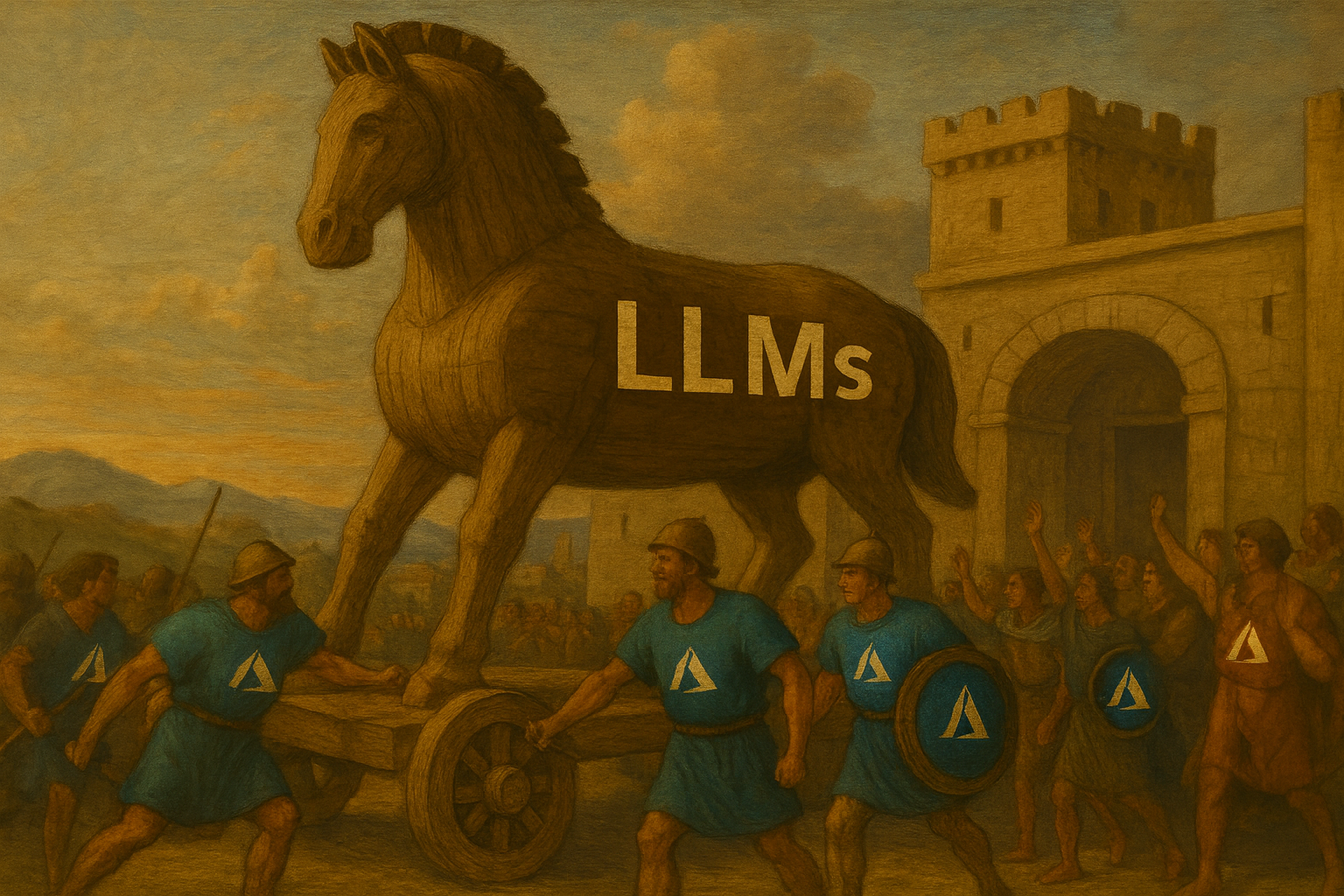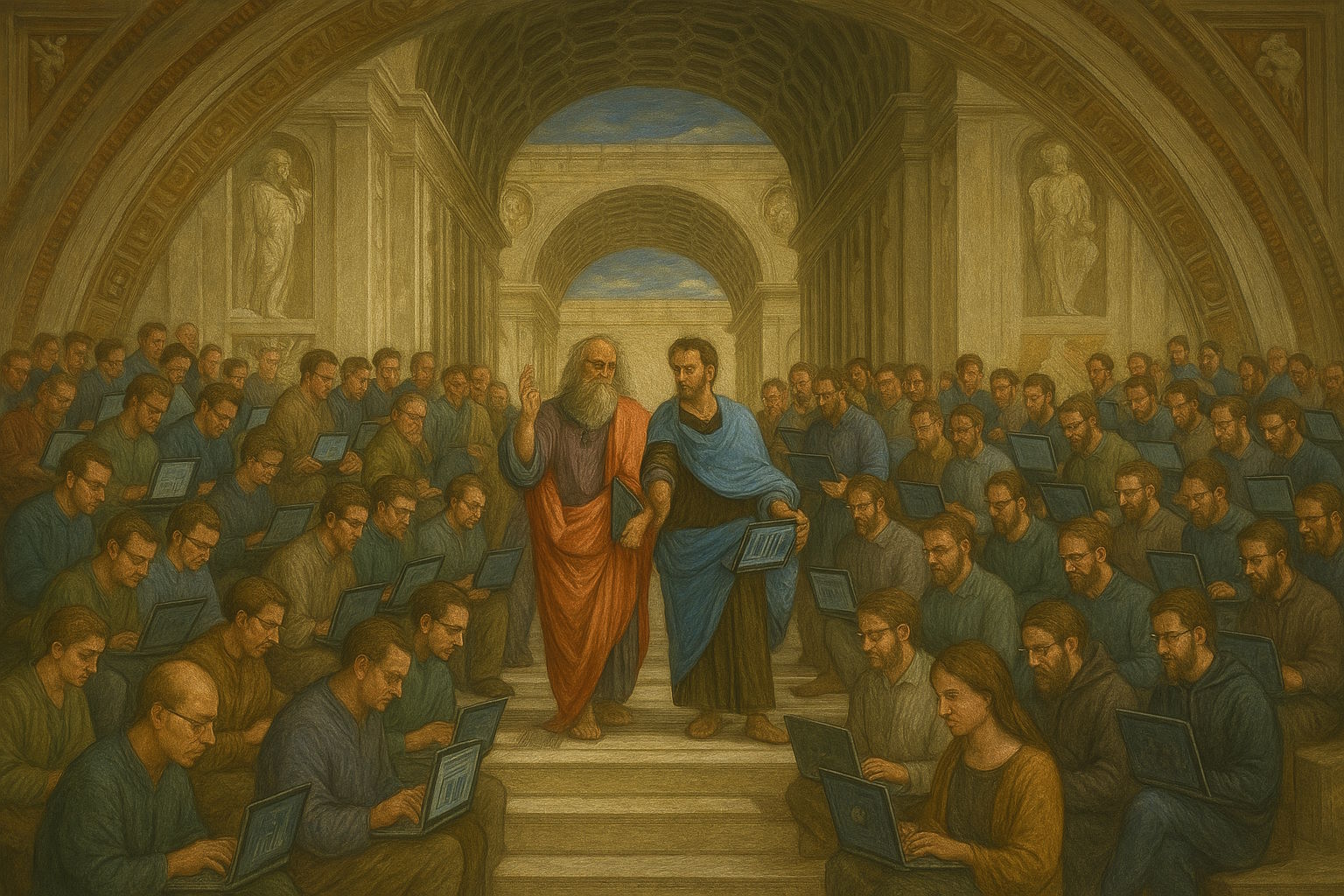Peak Minimal Effort: Large Language Models for Supply Chain Decisions.
“Il ne suffit pas d’ouvrir des portes déjà ouvertes; encore faut‑il éviter de repeindre la poignée en bleu Word.”
If you need a crash course in stating the obvious while simultaneously advertising Microsoft Azure, look no further than the recent “Large Language Models for Supply Chain Decisions.”1 The document promises to revolutionize operations; instead it re‑heats yesterday’s leftovers, plates them on Times New Roman, and charges admission.
Below is a light‑hearted autopsy of this tour de force of platitudes.

1. A formatting crime scene
Before we reach the abstract, the paper insults us with the default Heading 1 from Microsoft Word 97. No LaTeX, no typesetting love, not even a half‑hearted attempt at a decent figure caption. Dear authors: if TikZ feels intimidating, at least change the title color—anything to prove a human touched the template.
2. Kicking wide‑open doors
Page 1 solemnly announces that “Modern supply chains are complex” and that *“optimization tools have been widely utilized.” Ground‑breaking. Next they’ll reveal water is wet and Mondays follow Sundays.
Throughout the text every fact is either:
- already covered in undergraduate OR courses two decades ago, or
- so generic it could be copied‑paste into Wikipedia without anyone noticing.
3. LLM 101 — in 2025
Section 2 burns three pages explaining that an LLM “predicts the next word.” Imagine submitting a physics paper that pauses to clarify Newton’s F = ma. This is peak minimal effort: the model of scholarship where you assume your reader just woke up from 1990.
4. Where are the numbers?
The title promises “decisions,” yet the only equation in sight is the page number footer. No formulations, no loss functions, no KPIs, no benchmark compared to—even—Excel solver. We are told GPT‑4 hits “around 90% accuracy.” Accuracy of what, exactly? Cost estimates? Service levels? French pastry identification? Absent a metric, 90% of zero evidence still rounds down to zero.
5. The What‑If Cabaret
The authors parade a marvelous architecture (see Figure 1 — a flowchart worthy of PowerPoint ClipArt) translating a plain‑English “what if?” into “mathematical code.”
Yet the backstage magic is left to the imagination. Which solver? What runtime? How do you maintain feasibility when GPT cheerfully adds constraints that break the model? Silence. Trust us, we’re the experts.
6. Sponsored content, academic edition™
Roughly one‑third of the pages are a case study of Microsoft Azure planners who, we learn, are now thrilled because an internal chatbot saves them 23 % of investigation time.
That ratio is suspiciously precise for a metric never defined. More importantly, the “experiment” is indistinguishable from a press release. Product placement may be fine in Transformers 19, but in an academic chapter it reeks of infomercial.
7. Risk? Ethics? Nope.
LLMs hallucinate, leak data, invent suppliers out of thin air—none of which appear in the discussion. The authors do note that users must “learn to ask precise questions,” effectively blaming the operator if the model goes rogue. That’s like shipping a car without brakes and instructing drivers to “plan their stops carefully.”
8. Bibliography without biology
Five references: five are self‑citations, three are pre‑prints, one is HBR (read: corporate blog with footnotes). Actual supply‑chain literature—demand forecasting, stochastic optimization, probabilistic lead‑times—is nowhere to be found. Apparently OR began when GPT‑3 was released.
9. Missed opportunities
- Probabilistic thinking: Supply chains run on uncertainty. The paper runs on deterministic fairy dust.
- Causal inference & counterfactuals: Replaced by “ask GPT what happens if factory F shuts down.”
- Computational cost: GPUs are hand‑waved as “special hardware.” Your cloud bill will send its regards.
Final thoughts
This chapter is not wrong; it is simply moot. It contributes about as much to supply‑chain science as bumper‑sticker wisdom contributes to philosophy. If the goal was to demonstrate that LLMs can write a supply‑chain paper, congratulations—the AI clearly did, and no one bothered to edit.
For readers seeking substance, may I suggest skipping the paper and prompting ChatGPT with “explain supply‑chain optimization like I’m five.” You’ll receive superior content, formatted better, and without the Azure commercials.


